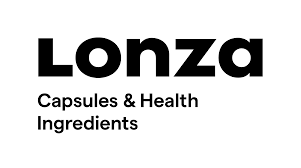GLP-1 receptor agonists are a class of therapeutic molecules used in the treatment of diabetes and obesity. Currently, they are injection-based due to their poor bioavailability, which is linked to their large size, enzymatic degradation, and stomach acidity. Therefore, without an oral solution, patient compliance is reduced.
Camille Dumont, Manager of Customer Applications - Innovaform® Accelerator, at Lonza Capsules & Health Ingredients, is investigating whether an oral GLP-1 solution could be on the cards. The combination of lipid-based formulations, permeation enhancers, and enteric dosage forms all represents promising ways of boosting the bioavailability of peptides.
Lipid-based formulations provide a protective lipophilic environment, and hydrophobic ion pairing (HIP) can make peptides more lipophilic, improving encapsulation and solubility. For lipid-based formulations to function, there are certain prerequisites; for example, the particle size of the formulation should be small enough to have good penetration across the mucus and epithelial barrier, and they must have a neutral or negative charge to penetrate across the mucus layer.
Dumont added that hydrophobic ion pairing (HIP) can make peptides more lipophilic, improving encapsulation and solubility. Furthermore, permeation enhancers like medium-chain fatty acids boost absorption, particularly in the intestine.
Next, Dumont presented a case study with exenatide. The team formed a hydrophobic ion pair to increase its lipophilicity to be able to load it in a lipid-based formulation. Dumont explained: “So here in our case study, we have used sodium docusate and sodium laurylsulfate. And here you can see on the left-hand side the results. So, the idea is to maximise the yield of this hydrophobic ion pair formation, and to maximize the log p that you obtain with your HIP.” Overall, the prototype lipid formulations protected ~80% of exenatide against enzymatic degradation and achieved high solubility in Labrafac-based systems.
Lonza is also known for its enteric capsule technology, which launched in 2022. It is a ready to use bilayer capsule comprising HPMC and HPMC-AS that resists stomach acid, releasing the drug in the intestine. It has displayed acid resistance, fast release at neutral pH in vitro, and in vivo, it shows timed release in the ileum.
To wrap up, Dumont touched on some customisation capabilities; capsule shell materials and hydrophobic agents can be tailored for compatibility with permeation enhancers, and dissolution pH can be tuned (pH 5.5–6.5) to control the intestinal release site.
